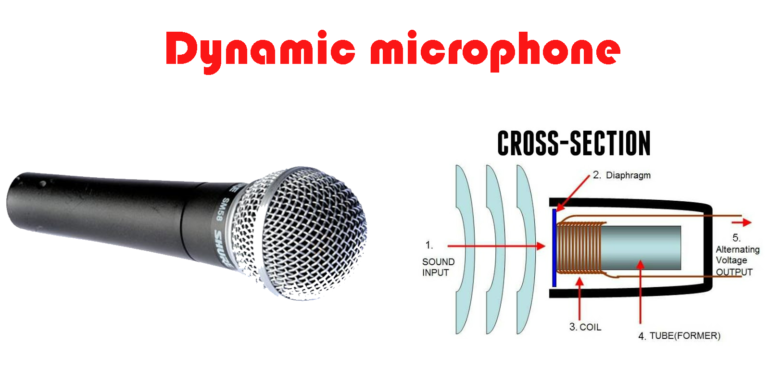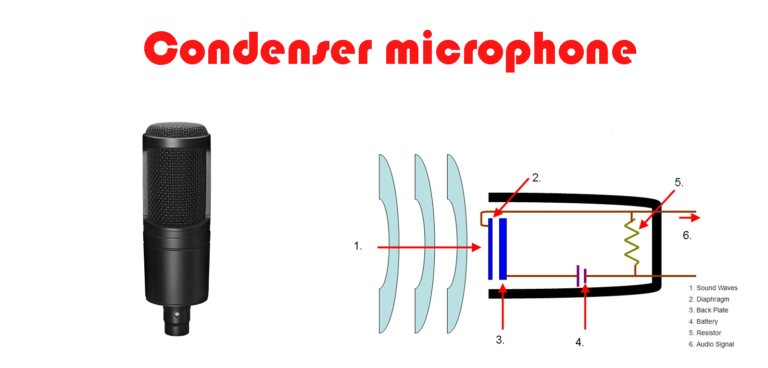What are Condenser and Dynamic microphones?


If you are planning to go into recording and trying to create your initial setup, there will come a time when you need to decide on what microphone you are going to be using. In this article, I’ll try to shed some light on the main differences between a dynamic and a condenser microphone and help you decide which one’s right for you.

For the dynamic microphone capsule, you have three main components:
This system works when sound waves hit the diaphragm that vibrates the voice coil. The movement of the coil within the magnetic field converts the audio signals into electrical signals then interpreted by your audio interface or by your amplifier.

When we look at dynamic mics they have a simple construction meaning that they are extremely rugged dynamic mics and handle extremely loud sound signals well.
They also do a pretty good job at background noise rejection. On the other hand, they have a relatively low sensitivity meaning they have a lower output level and mostly lack a full-frequency response.
The last thing they do is that dynamic microphones have a very distinct broadcast sound because most radio stations use broadcast mics.
The condenser microphone also has three main components: the diaphragm case which just holds everything together, the diaphragm, and the backplate. This design is known as a capacitor or it used to be called a condenser which is why they’re called condenser microphones.
So when this capsule is charged it generates an electrical field and as sound waves hit the diaphragm and it moves closer and farther away from the backplate which translates the sound signals into electrical signals.

There are two different types of condenser microphones:
All condenser microphones have circuitry in them that allows them to work with standard microphone inputs so regardless of the condenser capsule it is going to require some voltage to work.
Condenser mics are more complex. They are more fragile, but this allows them to pick up a wider frequency response. They have a more natural sound and have a better sensitivity or a higher output level.
On the downside, you have to be careful with them not to overdrive the capsule with extremely loud noises. Also, the electronics inside of all condenser microphones do generate a small amount of noise.

So with all this information, it’s time to decide which microphone is right for you. A dynamic microphone is best in live situations because they are more durable. They handle loud noise and do a pretty good job at background noise rejection.
So if you’re doing live performances or you’re doing some broadcasting, a dynamic mic should be the right choice for you.
The condenser mic would be the right choice in a controlled environment like a studio.
If you have the audio treatment, you have control over all the audio going into the microphone, you want the natural sound and you’re not that concerned with background noise, go with the condenser mic.
| Cookie | Duration | Description |
|---|---|---|
| cookielawinfo-checkbox-analytics | 11 months | This cookie is set by GDPR Cookie Consent plugin. The cookie is used to store the user consent for the cookies in the category "Analytics". |
| cookielawinfo-checkbox-functional | 11 months | The cookie is set by GDPR cookie consent to record the user consent for the cookies in the category "Functional". |
| cookielawinfo-checkbox-necessary | 11 months | This cookie is set by GDPR Cookie Consent plugin. The cookies is used to store the user consent for the cookies in the category "Necessary". |
| cookielawinfo-checkbox-others | 11 months | This cookie is set by GDPR Cookie Consent plugin. The cookie is used to store the user consent for the cookies in the category "Other. |
| cookielawinfo-checkbox-performance | 11 months | This cookie is set by GDPR Cookie Consent plugin. The cookie is used to store the user consent for the cookies in the category "Performance". |
| viewed_cookie_policy | 11 months | The cookie is set by the GDPR Cookie Consent plugin and is used to store whether or not user has consented to the use of cookies. It does not store any personal data. |
